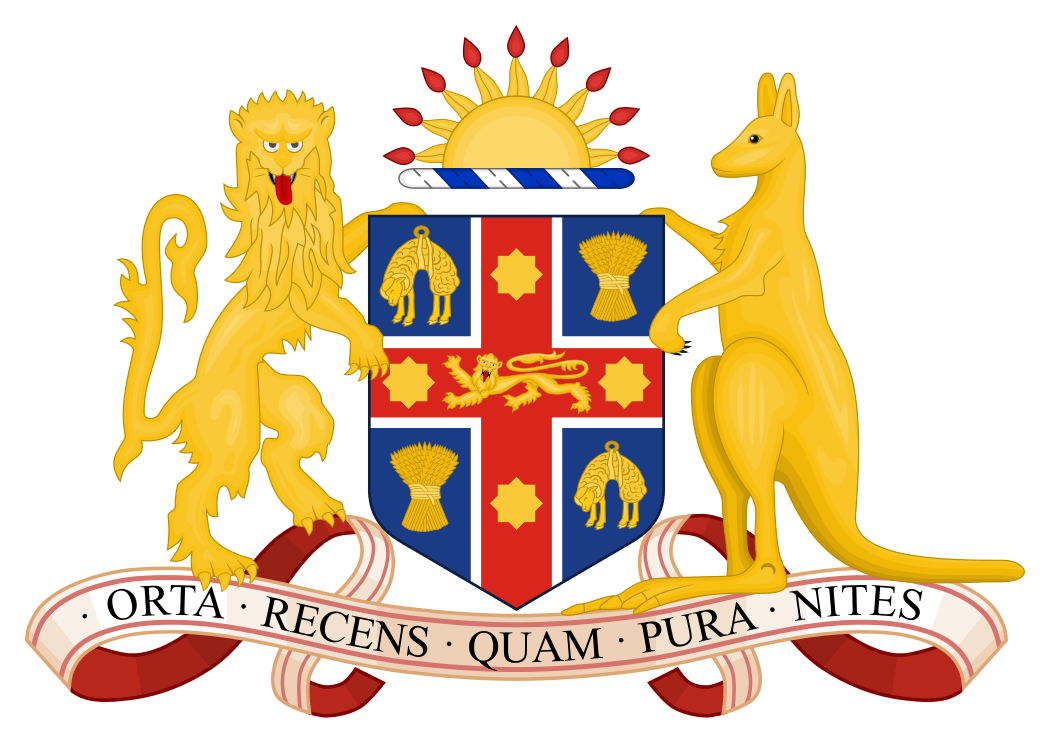Politics of New South Wales
 |
| This article is part of a series on the politics and government of Australia |
|
|
|
Related topics |
New South Wales politics takes place in context of bicameral parliamentary system. The main parties are the Liberal and National parties of the governing Coalition and the Australian Labor Party. Other minor political parties include the Greens, Shooters and Fishers Party and the Christian Democratic Party.
The New South Wales government is sometimes referred to informally as "the bear pit", as a mark of perceived unruly behaviour within the parliamentary chambers, and 'Macquarie Street', a metonym of the street of that name where Parliament House is located, in Sydney's CBD.
Government
The Australian state of New South Wales has a bicameral parliament. The Legislative Assembly (lower house) is composed of 93 members of parliament, each of whom represents a single electorate. The voting system is preferential. Until the mid-1990s, members of the Assembly served for up to four years, until the Greiner government made terms a fixed length of four years. The Legislative Council (upper house) comprises 42 members, who serve terms of 8 years. The Queen of Australia is represented by the governor, who formally appoints the premier, as nominated by the majority party in the Assembly.
Politics
Currently the formal chief executive of New South Wales is the governor, who is appointed as the Queen's representative on the advice of the head of the governing party. The current governor is David Hurley. The governor holds limited reserve powers, but with few exceptions is required by convention to act on the advice of the government.
The premier of New South Wales is currently The Hon. Mike Baird, MLA, of the Liberal Party, the senior partner of the governing Liberal–National Coalition. Baird succeeded Barry O'Farrell, who served as premier after a landslide election win at the 2011 election. O'Farrell was forced to resign following an unfortunate appearance at the NSW Independent Commission Against Corruption. The Deputy Premier of New South Wales, currently Nationals leader Troy Grant, MLA, who has held this office since succeeding Andrew Stoner after Stoner's resignation.
Officially opposing the New South Wales government is the opposition, made up of the Australian Labor Party, currently led by the leader of the opposition, Luke Foley, MLC.
Other parties not aligned with the government but represent in the parliament include the Christian Democrats, Greens and the Shooters and Fishers.
The government is decided every four years by election. The next election will be in 2019.
'Blue Ribbon' and 'Hard Labor' seats
The following lists electorates considered strongholds of each major political party. Generally, Labor is strongest in west and south Sydney, the Illawara and the Hunter. The Liberals dominate northern Sydney, while the Nationals dominate in country areas.
|
Labor |
Nationals |
Liberal |
Greens |
Notable New South Wales political figures
- Henry Parkes, 6th premier of New South Wales, longest-serving premier, regarded as the Father of Australian Federation
- Jack Lang, 23rd premier. Dismissed by the governor in 1932.
- Sir Robert Askin, 32nd premier, notable for his long tenure in office and corrupt behaviour.
- Nick Greiner, 37th premier. Widespread reforms and turbulent premiership.
- Bob Carr, 39th premier. Longest continual premiership and continued electoral success.
- Joe Tripodi, member for Fairfield. Labor politician and powerbroker. Notable in the downfall and elevation of consecutive premiers Iemma, Rees and Keneally.[1]
